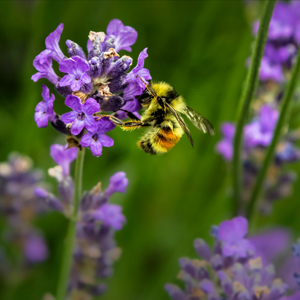Welcome, fellow gardeners, to another exciting exploration of the wonders of gardening! Today, we’re diving into the fascinating world of pollinators and discovering how to create a haven that beckons to these vital creatures. Join me, Lotte, as we learn about the importance of pollinators and how to cultivate a garden that nourishes their existence.
Pollinators—bees, butterflies, hummingbirds, and even bats—are essential players in the intricate dance of life in our ecosystems. They facilitate the reproduction of flowering plants by transferring pollen from one flower to another, ensuring the production of fruits, seeds, and new generations of plants. Without pollinators, many of the foods we love, from apples to almonds, would vanish from our tables, and the diversity of our landscapes would diminish.
So, how can we create a welcoming environment for these hardworking allies in our gardens? Here are some tips to help you get started:
1: Plant Pollinator-Friendly Flowers

Choose a diverse array of flowering plants that provide nectar and pollen throughout the growing season. Opt for native species whenever possible, as they have co-evolved with local pollinators and are well-suited to their needs. Some excellent choices include bee balm, coneflowers, lavender, and milkweed.
2: Provide Shelter and Nesting Sites
Pollinators need more than just food; they also require places to rest, nest, and shelter from predators and inclement weather. Incorporate features such as bee hotels, butterfly houses, and dense shrubs or trees to create inviting habitats for these beneficial insects and animals.
3: Avoid Pesticides and Chemicals
Pesticides and herbicides can harm pollinators directly or indirectly by contaminating the plants they rely on for food. Whenever possible, opt for organic gardening methods and avoid using chemical treatments in your garden. Embrace natural pest control solutions such as beneficial insects, companion planting, and cultural practices to maintain a healthy balance in your garden ecosystem.
4: Provide a Water Source
Like all living creatures, pollinators need water to survive. Set up a shallow dish filled with clean water or create a small pond or birdbath to offer a refreshing drink to your winged visitors.
5: Create Diversity in Your Garden

Aim for a garden that offers a variety of habitats, from sunny meadows to shady glens, to accommodate a wide range of pollinator species. Incorporate plants with different flower shapes, colors, and bloom times to attract a diverse array of visitors throughout the year.
As we cultivate our gardens with care and intention, let us remember the invaluable role that pollinators play in sustaining life on our planet. By creating a pollinator-friendly garden, we not only enhance the beauty and productivity of our own little slices of paradise but also contribute to the health and resilience of our shared ecosystem. So, let’s roll up our sleeves, plant some flowers, and welcome our pollinator friends with open arms. Happy gardening, dear friends!

Leave a Reply